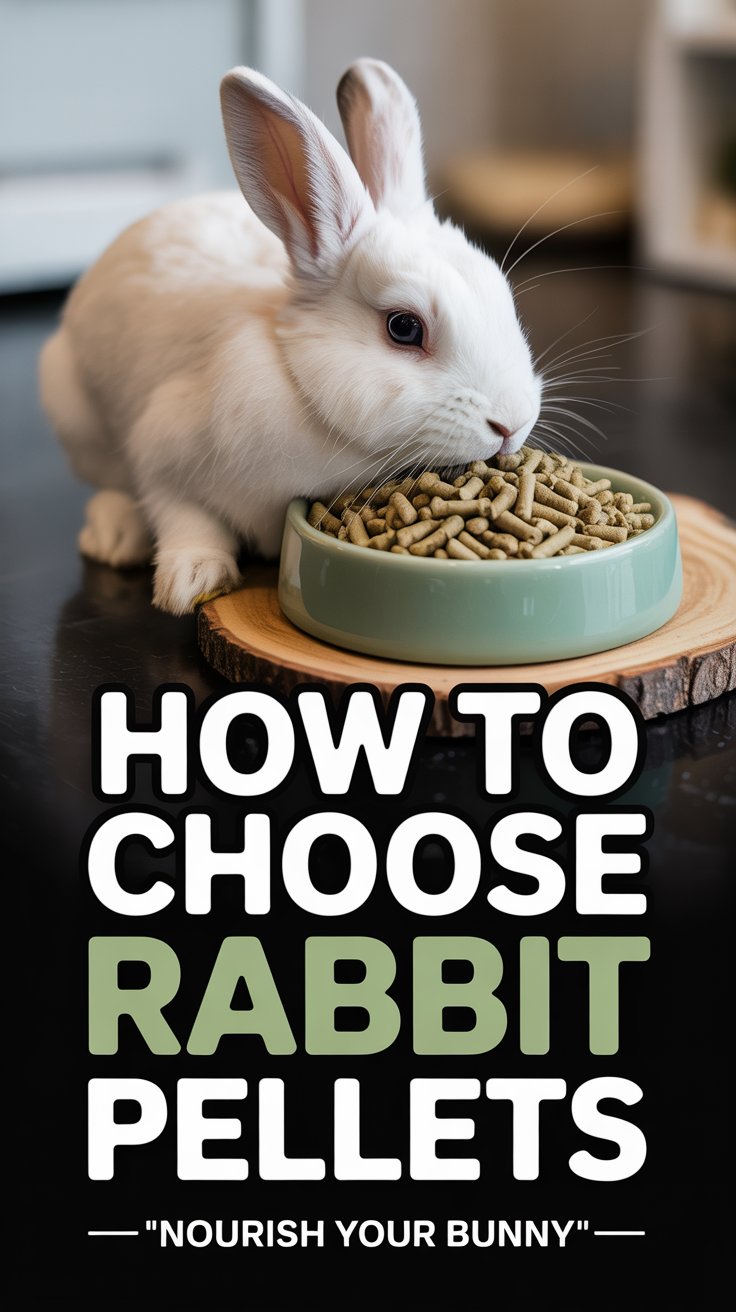Pellets are supposed to make feeding your rabbit simpler—but when you walk into the pet store, it feels more like you’ve entered the cereal aisle from another dimension. Bright packaging, buzzwords like “gourmet” or “vitamin-enriched,” and rabbits doing backflips on the label. Tempting, but mostly misleading.
If you’re feeling overwhelmed, you’re not alone. But don’t worry—this guide is designed to help you confidently choose the best rabbit pellets without being fooled by clever marketing.
🥦 Why Pellets Matter in a Hay-Based Diet
Hay will always be the foundation of your rabbit’s diet, making up around 80–90% of their intake. However, pellets serve as a critical nutritional supplement. They provide:
- Essential vitamins and minerals (like Vitamin D, E, and A)
- Consistent protein levels to support muscle development
- Balanced calcium and phosphorus ratios for kidney and bone health
- A predictable source of calories, especially useful for rabbits with poor appetites or special needs
But here’s the catch: not all pellets are created equal.
✅ Step-by-Step Guide to Choosing the Best Rabbit Pellets
1. Read the Ingredients First—Not the Front Label
Ignore the “premium” label on the front and go straight to the ingredients list.
Look for these first ingredients:
- Timothy hay – ideal for adult rabbits
- Alfalfa hay – suitable for young (under 6 months), pregnant, or nursing rabbits
Avoid:
- Corn
- Wheat middlings
- Soybean hulls
- Seeds or nuts
- Molasses or syrup (added sugars)
If it reads more like granola than rabbit food—put it back.
📝 Advanced Tip: Prefer pellets that state “first cut timothy hay” over just “timothy hay” for higher fiber content.
2. Evaluate the Nutritional Breakdown
Here’s what to look for on the label:
| Nutrient | Ideal Range (Adults) | Why It Matters |
|---|---|---|
| Fiber | 20–25% | Prevents GI stasis and promotes healthy digestion |
| Protein | 12–14% | Supports tissue repair without overloading kidneys |
| Fat | 1.5–3% | Keeps weight stable |
| Calcium | 0.4–0.8% | Avoids bladder sludge and stones |
🔍 Red Flag: If the manufacturer doesn’t list these values clearly, it’s best to skip that brand.
3. Skip the “Colorful” or “Mixed” Pellets
They might look fun, but they’re dangerous.
- Rabbits will pick out the sugary pieces, leading to an unbalanced diet.
- Added sugars and seeds are high in fat and can lead to obesity or liver issues.
✅ Stick with plain, uniform pellets. Simple is safer.
4. Size, Shape, and Texture: Why It Affects More Than Chewing
Pellets aren’t just food—they help wear down your rabbit’s constantly growing teeth.
- Small, uniform pellets are easiest to chew and safest to digest.
- Avoid compressed cubes or large chunks—they can cause dental and digestive issues.
🦷 Advanced Tip: Rotate in different textures of hay alongside pellets to better support dental wear.
5. Should You Choose Organic?
Organic Pros:
- Free from pesticides and GMOs
- Often fresher and more natural
Organic Cons:
- Higher price point
- Some lack thorough nutritional testing
💡 Balanced Take: Organic is great—but only if the nutritional content is sound. Never choose “organic” over “nutritionally balanced.”
6. Consider Age, Breed, and Health Conditions
Different life stages require different pellet types:
| Rabbit Type | Ideal Pellet Type |
|---|---|
| Kits (0–6 months) | Alfalfa-based, high-protein pellets |
| Adults (6 months–5 years) | Timothy-based, lower protein/fat |
| Seniors (5+ years) | Pellets with moderate protein and extra vitamin E (check with your vet) |
🚨 Special Cases:
- Overweight rabbits may need reduced-fat formulas.
- Dental disease rabbits may require softer or soaked pellets.
7. Portion Control: How Much Is Too Much?
Pellets should make up only 5–10% of your rabbit’s diet.
- Adult rabbits: ¼ cup per 5 lbs of body weight daily
- Young rabbits: Unlimited until 6 months, then taper down
- Obese rabbits: Pellet-free diets are sometimes prescribed (consult a vet)
🥗 Supplement With: Unlimited hay + 1–2 cups fresh greens daily
8. Taste Test: Rabbits Have Opinions Too
Even the best pellet is useless if your rabbit won’t eat it.
🐇 Try this:
- Buy a small bag first
- Mix with old pellets for 7–10 days to transition
- Observe for changes in stool, appetite, or mood
🚫 If your rabbit refuses or has soft stools, go back and try another high-quality brand.
9. Storage Matters: Keep It Fresh, Not Funky
Pellets lose nutritional value quickly if not stored properly.
✅ Store in:
- A cool, dry, airtight container
- A shaded area away from direct sunlight
⛔ Don’t:
- Use pellets past expiration
- Store near heat, moisture, or strong-smelling substances
🔍 Bonus: Vet-Recommended Pellet Brands
Here are a few brands that consistently earn praise from veterinarians and rabbit nutritionists:
- Oxbow Essentials (Adult Rabbit) – High in fiber, no junk
- Small Pet Select Timothy Pellets – Fresh, made in small batches
- Sherwood Pet Health – Soy-free, grain-free, nutrient dense
Note: Always check for batch freshness and formulation changes.
Final Thoughts: Choose Smart, Feed Smart
Rabbit pellets are a tool—not the whole toolbox. They should support your rabbit’s health, not compromise it. A good pellet:
- Lists timothy or alfalfa hay first
- Is high in fiber, low in fat
- Contains no fillers, sugars, or seeds
- Is appropriate for your rabbit’s life stage
🩺 When in doubt? Ask your vet. They can recommend based on your rabbit’s health, breed, and lifestyle.
Got questions or a favorite pellet to recommend? Drop it in the comments and let’s help each other raise healthier, happier bunnies! 🐰
